Auditions 3
THIS PAGE HAS MOST OF THE ADVICE ABOUT AUDITIONS.
STEP 2 - Prepare your audition pieces. See suggested AUDITION PIECES for Round 1 (and the notes there).
STEP 3 - CONDUCTING THE AUDITIONS - THE FIRST ROUND OF AUDITIONS + THE SECOND ROUND
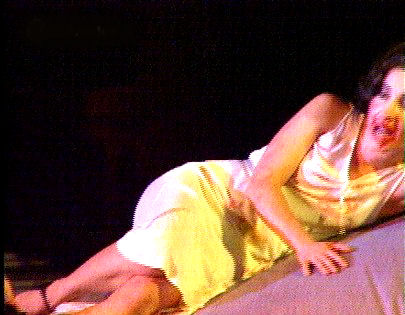
SOME PRACTICAL ARRANGEMENTS (summary):
| Arrange your Studio team for each auditions session. See In the Studio |
| Take it in turns to direct the auditionee, so you all gain the skills needed. |
| Print out the READINGS from AUDITION PIECES . Or select your own readings.Have enough copies. See the advice about each reading in AUDITION PIECES. |
| Do a TEST RUN with your own team. It's also very useful for each of you to experience what it is like to be an auditionee, the 'meeting and greeting', whether the instructions make sense, whether there are too many instructions, and how lonely it is to stand at the microphone alone in the studio. |
| Print out the INFORMATION slip of paper to give to each auditionee - Working Title of radio project (very short explanation) - a contact e-mail - when we will get back in touch with them. |
| Notices up on all the doors giving clear directions to the studio. Your advertising poster on the door of the Radio Studio. |
| Prepare the RADIO SPOTLIGHT BOOK |
| Pencils for auditionees and the Studio team, and fresh water and plastic cups for auditionees. |
| Maybe biscuits or sweets as a thank you - but only AFTER the audition. |
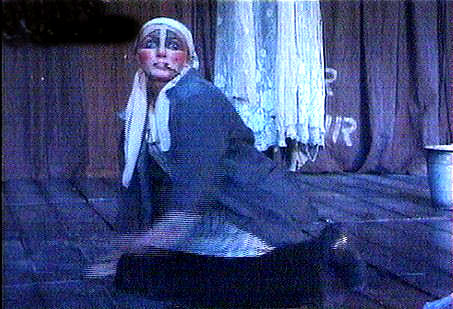
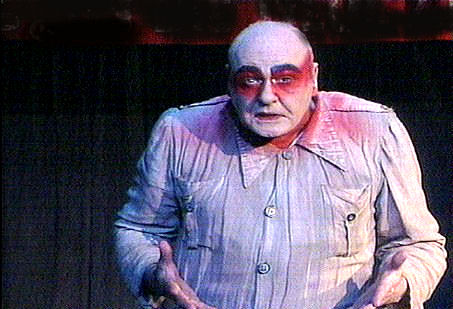
DANGERS - IDENTIFYING VOCAL PROBLEMS
| You must spot vocal problems. There just is not time to solve some vocal problems in radio production once an actor is cast. SPOTTING THESE PROBLEMS IS A SKILL AND YOU HAVE TO BECOME VOICE DOCTORS - DIAGNOSING PROBLEMS IMMEDIATELY. |
| VOCAL PROBLEM - PRONOUNCING 'R' : Spot anyone who has problems with pronouncing 'r' correctly, and who pronounces an 'r' like a 'w'. In the auditions texts, note the 'r', circle some 'rs' with your pencil, and be alert to this. Some more technical details about this - and 'l'. |
| VOCAL PROBLEM - PRONOUNCING 'S' : Spot anyone who pronounces 's' too loudly and intrusively. Some more technical details about this. |
| VOCAL PROBLEM - ADDING EXTRA SOUNDS TO WORDS. |
| VOCAL PROBLEM - slurring and stuttering |
| VOCAL PROBLEM - monotonous - the voice does not vary up and down in pitch (the musical notes in the voice stream as we speak which help to make sense of what we say) |
| It is claimed that ten percent of children entering the first grade in the United States have moderate to severe speech disorders, including stuttering. |
| The audition pieces you choose must test the voices - See suggested AUDITION PIECES for Round 1 (and the notes there). |
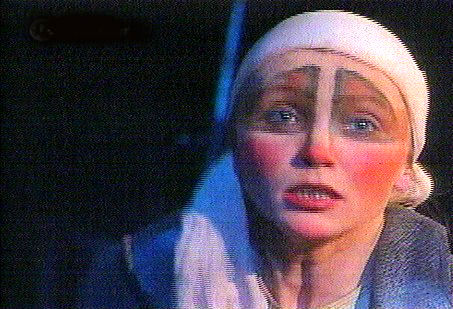
DANGERS - RADIO ACTING PROBLEMS
| LIFTING IT OFF THE PAGE: Radio acting demands an ability to sight read. There is really no way of getting around this unless the part is not large. |
| EXPRESSIVENESS: A radio actor has to be expressive - enough and not too much (usually). If someone gives a dull audition, they are not worth using, I'm afraid. |
| DETAIL: A useful actor puts detail into their radio acting in the audition. Changes of page, finding the objective in various phrases, finding the mood of the audition piece. |
| ASKING QUESTIONS: An actor with some experience or with intuition, asks you questions about the piece. And about pronunciation. |
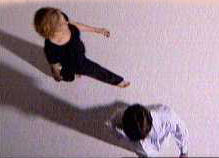
THIS IS THE FIRST ROUND OF AUDITIONS
It is to sort out the GOOD - the POSSIBLES - and the REJECTS.
When you identify an actor you could use, then take them to ROUND TWO right away.
See TAKE THE GOOD AUDITIONEE TO ROUND 2
If you have advertised well, all sorts of people will call in.
And that is what we want - everyone is welcome!
Assure them that NO EXPERIENCE is necessary. (Though welcome)

MEET AND GREET
| 1. Meet and greet- one person to be waiting outside the studio ready to greet. Have a big sign on the Studio door and more directions outside. |
| 2. You also need 1 director and 1 studio manager. |
| 3. Everyone must all be labelled with their name - the production team and you label each auditionee with their first and second names. |
| 4. Hand them an audition sheet while they are waiting and ask them to read through it. See suggested AUDITION PIECES for Round 1 (and the notes there). Give them sufficient time. Some auditionees will be nervous and need more time. Sometimes a good actor needs more time. If someone rushes through this without sufficient preparation and thought, think about this - what is their problem? |
| 5. Bring them in 1 at a time. No auditionee hears another's audition. |
| 6. Have the RADIO SPOTLIGHT BOOK to write their name, contact details (home + mobile+ e-mail + home phone number) and where they are from (their original home). Important that you get these contact details - you might miss someone good if you do not have these vital details. Note where is HOME-HOME - what their 'natural accent' is. Someone may have more than one HOME-HOME - moved from Birmingham to Cornwall, say (in the UK). FIND OUT IF THEY HAVE ANY ACTING EXPERIENCE. |
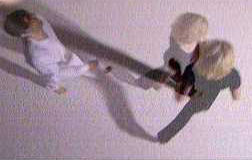
| 7. Tell them that if they come across any difficult words they must ask help from the PRODUCTION TEAM. See advice in AUDITION PIECES |
| 8. Instruct them how to stand at the microphone with script up and a bit to the side - not 'masking' (getting in the way of) the microphone, not blocking the line from the voice to the microphone. |
| 9. Tell them that the microphone is like the human ear- no stage performances! Speak to the microphone as you would to a human ear that near. Do not shout into it. |
| 10. Have water ready - plastic cups - fresh water. Respect hygeine. Fresh cup for each. |
| 11. Tell them to start reading in their own time. DO NOT 'GO FOR LEVELS' - sort that out as you go along - do not waste time! RECORD EACH AUDITIONEE on a labelled mini-disk or however you record. Carefully note their number. Keep a careful record. (This is where it CAN GO WRONG - you must record the name of each auditionee to each track correctly.) |
| 12. Tell them you will contact them by email if they have a recall. Tell them by when - this is most important, so that you do not waste good will by delay. |
| 13. Be positive- tell them if they are good! (If they are NOT good - shmooze - give them confidence - thank them.) Do NOT tell them they are good, if they are not. But be polite. Do not give anyone false hopes. |
| 14. Give them a slip of paper with - Working Title of radio project (very short explanation) - a contact e-mail - when we will get back in touch with them. |
| REMEMBER: Auditionees will arrive expecting a stage audition - so they need to be told what is what, how short this first process is, and they must be supported. SCHMOOZE the likely ones - in the best way! You will need a lot from them - a lot of goodwill! Get them on your side! |
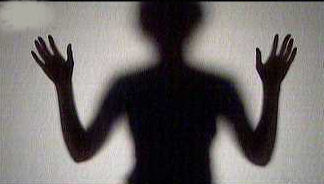
IN THE STUDIO
Note: You audition each person in the Studio singly. Nobody else
with them. This enables them to concentrate. You do not allow
other auditionees to listen in AT ALL.
Record each audition piece. This will be essential for later consideration - as you go through the notes in the Audition Book as a group, and at any time for you as a Director.
Be polite and supportive to all. Make a creative atmosphere. Your auditionees will be nervous.
Arrange your Studio team: Director, Studio Manager, PA noting in the Auditions Book.
Take it in turns to direct the auditionee.

Greeters:
As soon as someone for audition arrives, greet them and arrange
their voice audition as soon as possible within the production
time.
Select an audition piece for them.
Give the auditionee the sheet with their audition piece.
Ask them to read the piece over - and aloud - and practice -
and ask you if there are any problems, about meaning, about interpretation,
about pronunciation.
Assure them and calm their nerves.
Make sure there is fresh water and a plastic cup in the Studio,
along with pencils.
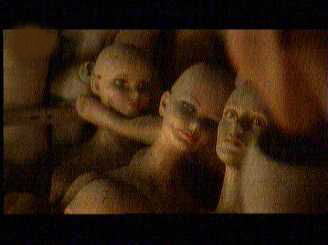
The procedure is as follows:
| 1. Place the visitor in position 3. The actor holds his / her arm up (hand clenched) and out, and that gives the distance from the microphone. The clenched hand is just level with the microphone (but not touching it). |
| 2. Explain about the microphone, about holding the script up and talking directly to the microphone. Explain about not letting the head fall. |
| 3. Warn about blasting. And to keep a relatively volume level. This is not stage acting. The microphone is like the human ear, and very sensitive. 'You wouldn't shout into your friend's ear when you are that close'. (Stage actors will be tempted to project.) Always 'bring it down', and 'less is more'. |
| 4. Explain the procedure. You will leave them alone in the Studio. You will go for levels first (just a bit of script from them) and then follows the audition. |
| 5. Show them the cue light. |
| 6. Ask them to check for pronunciation and to ask about anything that worries them. (All of the pieces have pronunciation problems.) |
| 7. Leave them alone in the Studio. |
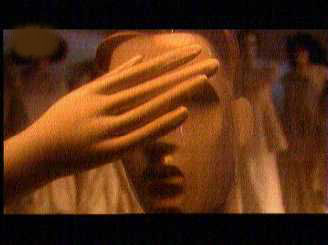
In the Cubicle (Director's Room)
PREPARING THE AUDITIONEE IN THE STUDIO FROM THE CUBICLE
| 1. Check the auditionee is all right. That they can hear you through the talk-back and that can see the cue light. |
| 2. Ask them to go ahead in their own time. (Do NOT go for levels - makes things too complicated.) |
| 3. Check their their audition piece has been recorded and that the track is properly numbered and named. |

DURING THE AUDITION
| 1. Listen intently for all voice aspects. Be a VOICE DOCTOR. |
| 2. Do not stop them at all, usually. But do this only if they are going too fast or there is another aspect of their performance which makes it difficult to audition them. You can always ask them to go through it again. (Hence the importance of a short audition piece.) |
| 3. If someone is interesting, see how they respond to making an adjustment. Ask them to do the piece again, and the adjustment is a note from you - to do it in another mood or emotion etc. 'Could I have just a bit of anger there?' (specify where) OR 'Could you say that with a smile in your voice?' (specify which phrase) OR 'Could you discover the emotions of the character there a bit more? What do you think the character is thinking there?'. Note you are asking them to think for themselves, and to be creative, to be a creative partner. |

TAKE THE GOOD AUDITIONEE TO ROUND 2
| Immediately put pairs of interesting actors together with dialogue script. Now you can test them out on interactive acting and getting to grips with a character. |
| 'Wrap Pack' 2.2.5 - Olivia + Jack + Colin = 1 female and 2 males OR 1 female and 1 male |
| 'Wrap Pack' - Scenes 1-1-2, 1-1-4 one male, one female (Jack, Sarah) |
| 'Wrap Pack' 1-2-3 - two males (Jack and Colin) |
| 'Wrap Pack' 1-3-5 - two males, one female (Jack, Colin, Olivia) |
| 'Wrap Pack' 1-4-1 - one female, one male (Olivia, Colin) |
More script scenes will be added here.

Some technical tricks to help you casting your project.
| You can put two (or more) actors together in a scene, even though they were auditioned on different days. You will need to 'put' different actors together, to assess how they could work together. You need to 'put together' Actor A and Actor B. |
| Using your two recordings of the same scene, but Actor A (with Actor C) and Actor B (paired with Actor D), this is what you do. YOU EDIT ACTOR A AND ACTOR B TOGETHER IN POST-PRODUCTION. Use just a bit of dialogue, say from 'Wrap Pack' 1-4-1 - one female, one male (Olivia, Colin) |
| With just a bit of post-production effort, cut and paste the two actors together in dialogue. Though they have never stood to the same microphone together before, now you have edited them in dialogue together. Technically, this is known as 'drop-ins'. |
| This editing is enough to give you a sense of how the two would work together. |
| You can also do this for three or even more. |

CASTING IS LIKE MUSIC - THE ACTORS HAVE TO 'CHIME' TOGETHER
| In the final cast you choose, you have to contrast the voices together, so you get a full range. |
| The big danger is CLUSTERING - two or more characters who sound the same, and who could be mistaken for each other. |
| The solution is in the script as well, for the characters have to be fully created (with a back story) so that they stand out from each other - conflict and plot and emotions. They have different objectives and they clash. |
| Think of all the instruments in an orchestra, and you have to get the range and contrast. |
| The greatest danger of clustering is in young women's voices. |
| You can also get contrast through dialect (accent) and pitch (musical notes in a voice). |
| So avoid - if you can - scenes set only in a girls' school! |
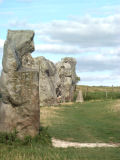
| 1. Ask the auditionee to remain in the Studio. |
| 2. Immediately discuss (fast) their audition piece with others in the Cubicle. |
| 3. Make notes in their form. These notes are best done fast. |
| 4. Invite them into the cubicle and quickly introduce them around. Thank them warmly. If you regard them as a possible actor, make them confident in you all. Introduce them round. Hence the importance of you all having a name label. Use your names and repeat them. |
| 5. Give the actor a key contact - one of you who will be in touch with them. Tell them when you will be back to them - give a date. Make sure they have the slip of paper with the details of the project and your contact details. RECHECK THEIR CONTACT DETAILS. |
| TO AUDITIONS 1 |
| TO AUDITIONS 2 |
| TO Dialect or accent |
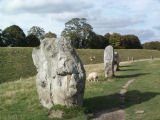
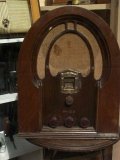
This site is 'Radio Drama - directing, acting, technical, learning & teaching, researching, styles, genres'. See INDEX to navigate also. Complete curriculum of scripts, techniques (acting & directing & post-production & genre styles), advice, sound files - effects and atmoses (with no copyright and so free to use), detailed script commentaries, etc.
Academic material on this site is  Alan Beck
is licensed under a Creative Commons Attribution-Non-Commercial-Share
Alike 2.0 UK: England & Wales License.
Alan Beck
is licensed under a Creative Commons Attribution-Non-Commercial-Share
Alike 2.0 UK: England & Wales License.
Learn about radio drama on this site along with my book - Beck, Alan, Radio Acting, London: A & C Black ISBN 0-7136-4631-4 Available on Amazon. CLICK HERE.
To the WELCOME PAGE for Alan Beck's sites. See more of Alan Beck's work.
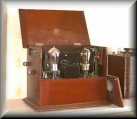
Any opinions expressed in this site are the personal opinions of the owner of the site. IF YOU HAVE COMMENTS, PLEASE EMAIL TO : [email protected]
